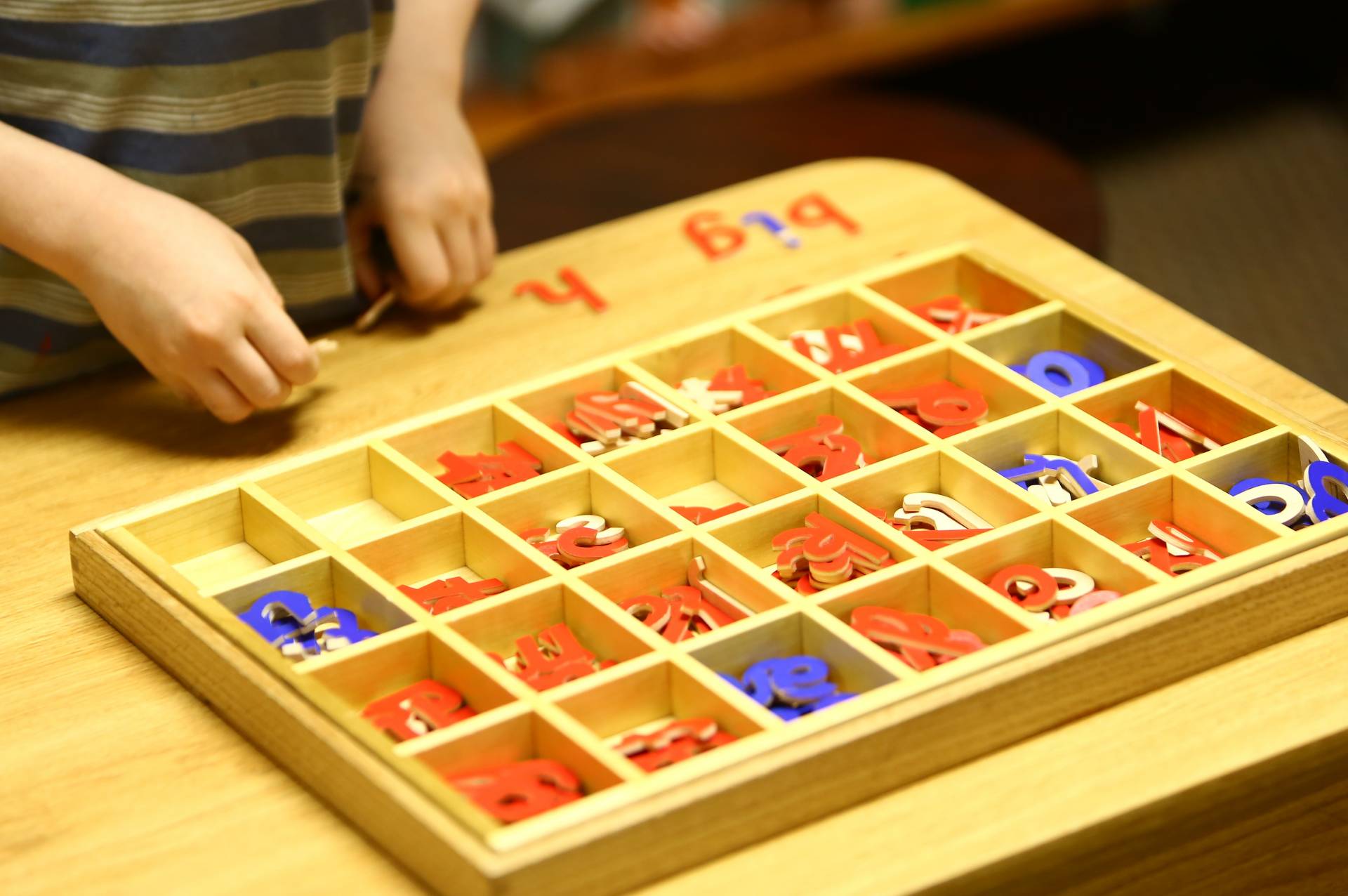There are two main interpretations of the Montessori philosophy: AMI and AMS.
Asking the right questions when touring the school will help determine what is best for your family.
Both AMI and AMS are well thought out and valid, although they differ strongly on certain points. When looking into a school you need to know which interpretation meshes more closely with what you want for your child’s education.
AMI (Association Montessori Internationale)

Established by Maria Montessori and her son, Mario in 1929 and has international headquarters in Amsterdam, The Netherlands. In AMI schools, Montessori philosophy and curriculum are implemented in a way that is consistent with the original approach of Maria Montessori. The Montessori materials are used precisely in the manner used by Dr. Montessori without deviation or extensions; preserving what proponents of this interpretation believe is the purity of the method.
AMS (American Montessori Society)
In the late 1960 Nancy McCormick Rambusch, an AMI Montessori trained teacher founded the American Montessori Society (AMS). She firmly believed that aspects of the Montessori method had to be modified to accommodate the culture in America. In AMS schools, teachers continue the methods developed by Dr. Montessori while bringing in outside resources, materials, and ideas to extend or supplement the Montessori curriculum.
Public School Montessori
Some public Montessori programs are affiliated with either AMI or AMS, however, most public programs do not align with the authentic Montessori methods. As an example, concepts like the mixed age group, three-hour work cycle and teacher training may not be consistent aspects of the public Montessori program.
Montessori Authenticity
Montessori societies were established internationally to promote the ideas of Maria Montessori. However, Montessori maintained tight control over the use of her name and insisted that only she was able to give authentic training in her methods. In 1929, she founded the Association Montessori Internationale (AMI), “to maintain the integrity of her life’s work, and to ensure that it would be perpetuated after her death.” AMI continues to train teachers using materials and presentations developed by Montessori and her son, Mario Montessori.
Montessori societies were established in the United States and in several European countries during Montessori’s lifetime, but teacher training and authenticity remained under Montessori’s control. In 1960, after a dispute with AMI, the American Montessori Society (AMS) was formed. According to AMS, “The two organizations have since reconciled their differences, and now enjoy a collegial relationship of mutual support and respect.” AMS trains teachers and states on its website that “AMS is the largest Montessori organization in the world.” Other smaller organizations offer training as well, and there is an ongoing controversy in the Montessori world about what constitutes authentic Montessori.
In 1967, the US Patent Trademark Trial and Appeal Board ruled that “the term ‘Montessori’ has a generic and/or descriptive significance.” Therefore, in the United States and elsewhere, the term can be used freely without giving any guarantee of how closely, if at all, a program applies Montessori’s work.
Upcoming Events
may
17may5:00 pm7:00 pmInternational Night - half day today5:00 pm - 7:00 pm

Event Details
All programs are half day today - Toddler & Primary pick up at Noon, Elementary pick up at 12;30pm. Join us for the ever popular INTERNATIONAL NIGHT! Each classroom will be
Event Details
All programs are half day today – Toddler & Primary pick up at Noon, Elementary pick up at 12;30pm.
Join us for the ever popular INTERNATIONAL NIGHT! Each classroom will be transformed into one of the seven continents and children will have the opportunity to “travel” to each continent and get their passport stamped at each stop!
Time
(Friday) 5:00 pm - 7:00 pm
30may6:00 pm7:30 pmGetting Ready for Primary Parent Class6:00 pm - 7:30 pm

Event Details
This class is for our new primary parents starting at Radmoor this coming Fall and for parents of our current toddler students transitioning to Primary.
Event Details
This class is for our new primary parents starting at Radmoor this coming Fall and for parents of our current toddler students transitioning to Primary.
Time
(Thursday) 6:00 pm - 7:30 pm
Location
Primary 3 Classroom




